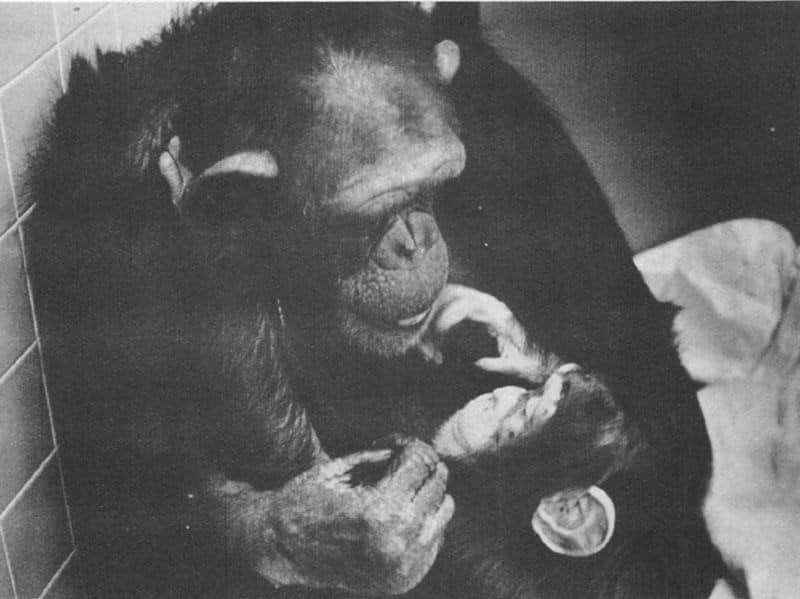
Chimpanzee Sounds and Communication

By Emmett Johnson
Like humans, chimpanzees also use languages to communicate with one another! Chimpanzees may not use spoken English, but they can communicate with body language/sign language and the distinct types of chimpanzee sounds they use for each other. All animals have their languages, but within the scientific field, they call it “communication.”
Kailie, one of the caregivers at Project Chimps, is knowledgeable about chimpanzees and the languages they use with each other. She has a Master’s degree in primate behavior and one element she studied was the different languages they use. Through talking with her, she is truly an expert on how chimpanzees communicate.
Chimpanzee Sounds
Chimpanzees use their own sets of vocalizations to communicate with each other. A lot of their chimpanzee sounds depend on the context of the situations that they are in. For example, chimps will grunt while waiting for food. Sometimes the caregivers at Project Chimps will make the same grunting noise back at the chimps while providing food. In comparison, chimps in the wild will use the same grunting noise as a notification to other chimps that they have located food.
General sounds that chimps make are called “pant hoots.” Typically pant hoots are made for general excitement. Pant hoots are the most common type of chimpanzee call, and the vocalization of it gets louder as they continue to make the sound.
Blowing raspberries is also another vocalization that chimps use for positivity. They will use this sound while grooming another chimp or at the caregivers for attention. The chimps make this sound when they want to play or get food from the caregivers.
Sounds made for aggression are called “threat barks.” A chimp will give a threat bark when another chimp or human gets on their nerves. The sound can happen when a new person that the chimp is unfamiliar with enters the area. The chimpanzees will alarm call at something they are afraid of, like snakes.
Sign Language
Kailie studied chimpanzees who were cross-fostered, meaning they were raised in an environment similar to that of a human child. Several scientists raised different chimpanzees in this cross-fostering environment, which included exposure to sign language. One of the chimps they raised was Washoe.
The scientists who taught Washoe kept close records of everything she knew how to communicate. The scientists understood that body placement and movement attached to ASL are important for context and kept records and research on this for Washoe. Washoe later taught her adopted chimpanzee son sign language. She would take his hands and move them into positions to teach him what the movements meant.

Chimps do not use the standard ASL alphabet though it is based off of that. The sentences chimps put together are not as grammatically complex as what a human can, but they will still put together a string of signs that make sense grammatically and they use their signs conversationally. The chimps will use signs to ask for things like playing or certain foods.
Chimps can talk to themselves in sign language. They use sign language as a way of showing and displaying their imagination. One chimp that Kailie worked with picked up a purse and signed the word “shoe.” Then, the chimp put the purse on its foot and pretended it was a shoe by signing “shoe.”
Is Rusty just rusty?
At Chimps Ahoy, a chimp named Rusty knows sign language. When Kailie first met Rusty, she tried to sign to him as a means of communication. Rusty did not understand the signs that Kailie was giving. But Rusty may know a separate set of signs that Kailie does not know.
Sign language works well for chimpanzees to communicate because chimps do not have the same vocal cords as humans. The difference in vocal cords prevents chimps from being able to respond in languages such as English. One chimp, Vicki, was taught English for a year. The results were that Vicki could only say “mama,” “papa,” “up,” and “cup.” She could only form these words by using her hands to move her lips to form the words.
Do you want to hear the chimps up close? Plan your visit here to see how chimps communicate!

